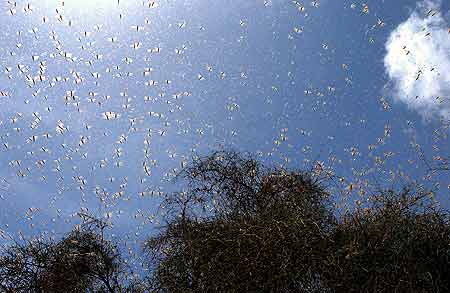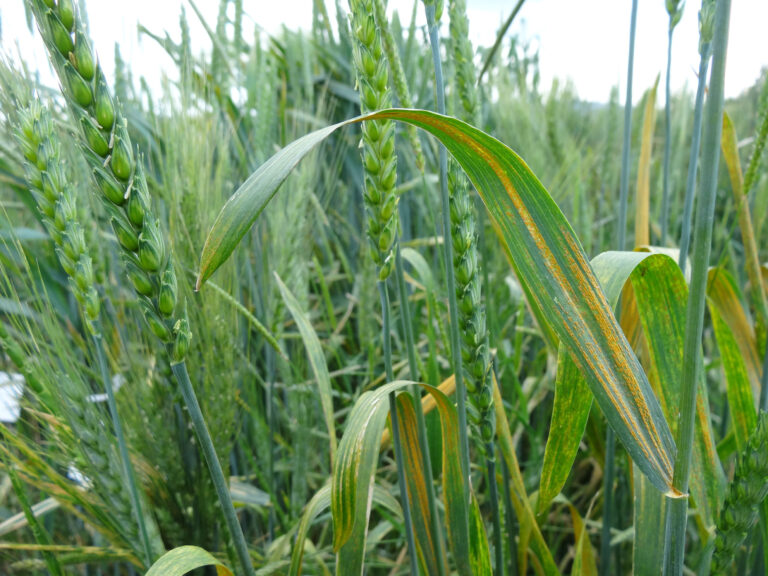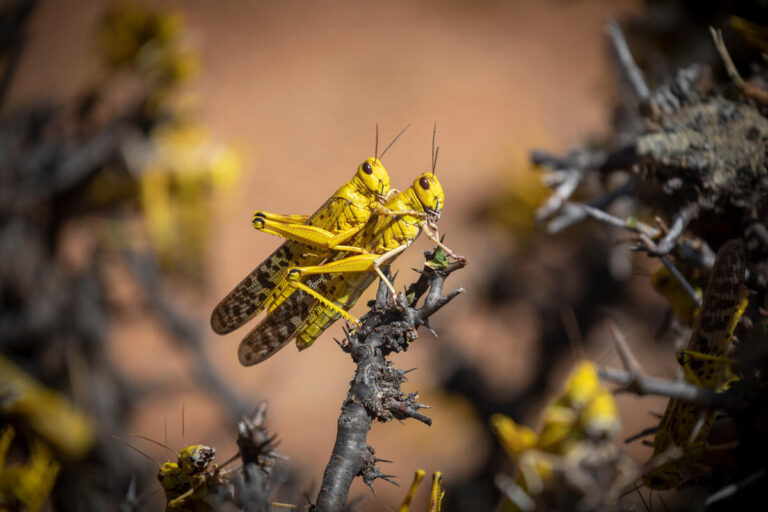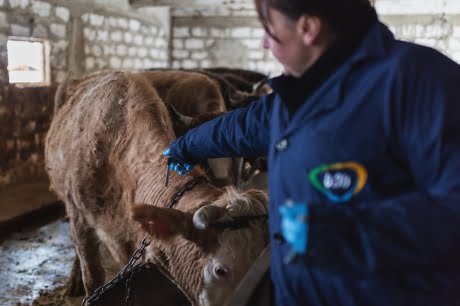According to Food and Agriculture Organization of the United Nations, (FAO) increasing number of second-generation immature swarms continue to form in northwest Kenya. The bulk of swarm formation is likely to occur during the next two weeks followed by a decline in July.
Before migration, swarms will remain for a short time during which there is a considerable threat to crops and pastures in Turkana and Marsabit counties. Thereafter, the swarms are expected to migrate northwards to the summer breeding areas in Sudan and Ethiopia where they will mature quickly and lay eggs. Some of the swarms will take about a week to cross South Sudan to reach South Kordofan and South Darfur while other swarms will move north to east and northern Ethiopia. Any swarms in northern Somalia can migrate across the Indian Ocean to the summer breeding areas along both sides of the Indo-Pakistan border.
In Sudan, some rains have fallen so far in South Darfur and South Kordofan, and no locusts are present except for isolated adults in the Nile Valley. If the rains are not sufficient, then the invading swarms are likely to continue to eastern Chad and migrate westwards across the Sahel of West Africa. This threat should decline progressively during the next four weeks.
In Ethiopia, control operations continue against hopper bands and new swarms that are forming in the east and northeast. Smaller operations are underway in central and northern Somalia.
Locust update – More swarms form in East Africa

Share your views about this story
Related stories

Wheat rust -the pathogens that the wind brings to the farm
In a field of ripening wheat, Lutfi Çetin bends low, inspecting the leaves and stalks

FAO Urges Vigilance as Desert Locust Threat Intensifies in Northwest Africa
The Food and Agriculture Organization of the United Nations (FAO) is calling on countries in

FAO Food Price Index rises in February
The benchmark for global food commodity prices rose in February, propelled by increased sugar, dairy,

Solidaridad assisting Mozambique Women in Combating Food Waste
By Kimuri Mwangi Food waste is a pressing global issue that not only squanders valuable

Pulses benefit in improving soil
Pulses are the dried edible seeds of legumes both cultivated for food and feed. Colourful

QU Dongyu re-elected FAO Director-General
QU Dongyu was re-elected to a second term as Director-General of the Food and Agriculture

Digitalizing cows in Georgia
In February, when the streets of Sachkhere, Georgia are covered with snow and temperatures reach

FAO hands over a spray aircraft to DLCO-EA to improve Desert Locust control efforts in the region
By Kimuri Mwangi The Food and Agriculture Organization of the United Nations (FAO) handed over

Six reasons to stop under-valuing millet
Millets encompass a diverse group of small-grained, dryland cereals including foxtail, barnyard and fonio, among

COMESA and AGRA lead efforts to develop a Regional Food Balance Sheet
The Alliance for Green Revolution in Africa (AGRA) and COMESA are leading an effort to

